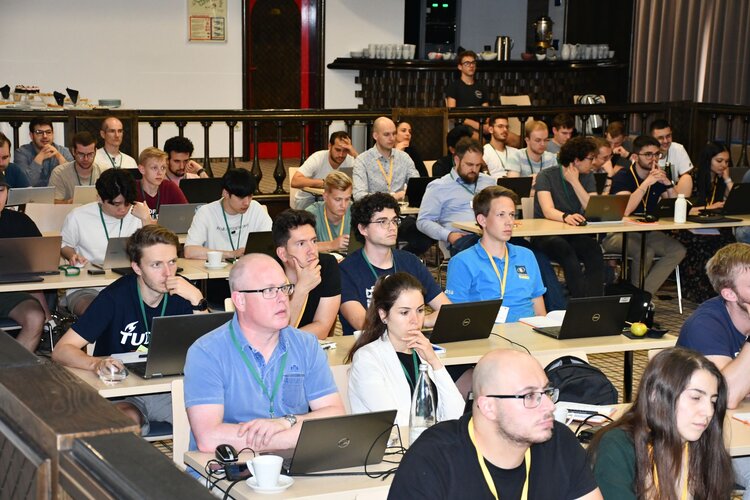
Copernical Team
New measurements turn the Hubble tension into a crisis
 The Universe really seems to be expanding fast. Too fast, even.
A new measurement confirms what previous - and highly debated - results had shown: The Universe is expanding faster than predicted by theoretical models, and faster than can be explained by our current understanding of physics.
This discrepancy between model and data became known as the Hubble tension. Now, results publi
The Universe really seems to be expanding fast. Too fast, even.
A new measurement confirms what previous - and highly debated - results had shown: The Universe is expanding faster than predicted by theoretical models, and faster than can be explained by our current understanding of physics.
This discrepancy between model and data became known as the Hubble tension. Now, results publi The Mars Pivot
 Just two weeks ago, in these very pages, I outlined what seemed then a bold prediction about America's space strategy. President Trump's inaugural declaration to 'pursue our manifest destiny into the stars' and 'plant the Stars and Stripes on the planet Mars'- is not anymore campaign rhetoric it's the ultimate cosmic mic drop!
Just two weeks ago, in these very pages, I outlined what seemed then a bold prediction about America's space strategy. President Trump's inaugural declaration to 'pursue our manifest destiny into the stars' and 'plant the Stars and Stripes on the planet Mars'- is not anymore campaign rhetoric it's the ultimate cosmic mic drop! Astronauts on NASA's Artemis mission to the moon will need better boots. Here's why
This request seems a bit unusual, so we need to confirm that you're human. Please press and hold the button until it turns completely green. Thank you for your cooperation!
Press and hold the button
If you believe this is an error, please contact our support team.
185.132.36.159 : 84aeb514-142f-40e0-ad52-77c4703a
Malargüe—A satellite dish best served cold: Cryogenic upgrade boosts capacity by almost 80%
This request seems a bit unusual, so we need to confirm that you're human. Please press and hold the button until it turns completely green. Thank you for your cooperation!
Press and hold the button
If you believe this is an error, please contact our support team.
185.132.36.159 : 5c7499a3-0ea5-4f88-a9d2-48fc9b23
NASA Kennedy ground systems prepping hardware for Artemis II and beyond
This request seems a bit unusual, so we need to confirm that you're human. Please press and hold the button until it turns completely green. Thank you for your cooperation!
Press and hold the button
If you believe this is an error, please contact our support team.
185.132.36.159 : 2cbc2ade-fe97-4ac5-a2b0-60f63ae3
NASA sets new hydrogen sulfide exposure limits for space missions
This request seems a bit unusual, so we need to confirm that you're human. Please press and hold the button until it turns completely green. Thank you for your cooperation!
Press and hold the button
If you believe this is an error, please contact our support team.
185.132.36.159 : a5270baa-559d-4208-86a1-85e9ef04
The Starbase rocket testing facility is permanently changing the landscape of southern Texas
This request seems a bit unusual, so we need to confirm that you're human. Please press and hold the button until it turns completely green. Thank you for your cooperation!
Press and hold the button
If you believe this is an error, please contact our support team.
185.132.36.159 : ef34da8a-9a20-4e04-b1aa-e8b42d86
Jetting into space
 Image:
Jetting into space
Image:
Jetting into space Leo P (NIRCam image)
 Image:
Leo P (NIRCam image)
Image:
Leo P (NIRCam image) Satnav summer school open for registrations

Are you a young researcher in the field of satellite navigation? Learn from top-notch experts and expand your network at this year’s ESA-JRC International Summer School on Global Navigation Satellite Systems, taking place this July in Arachova, Greece.




































